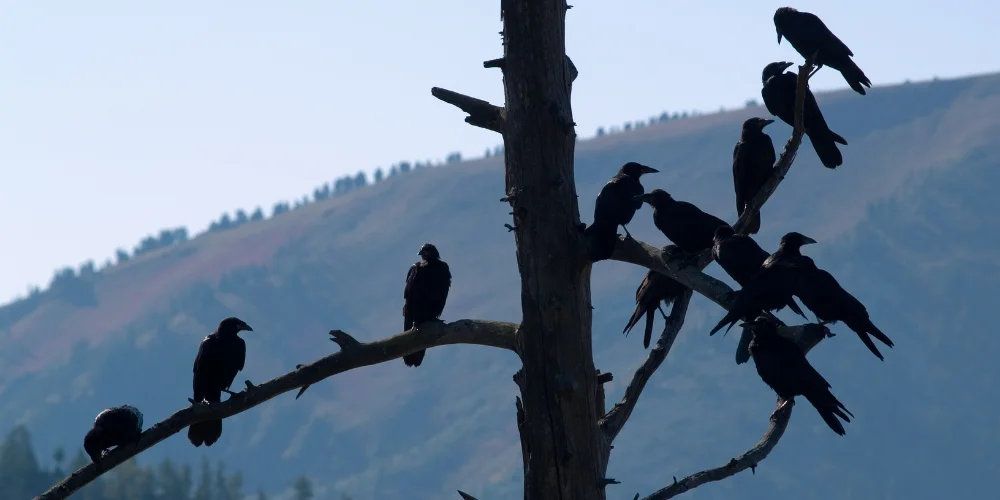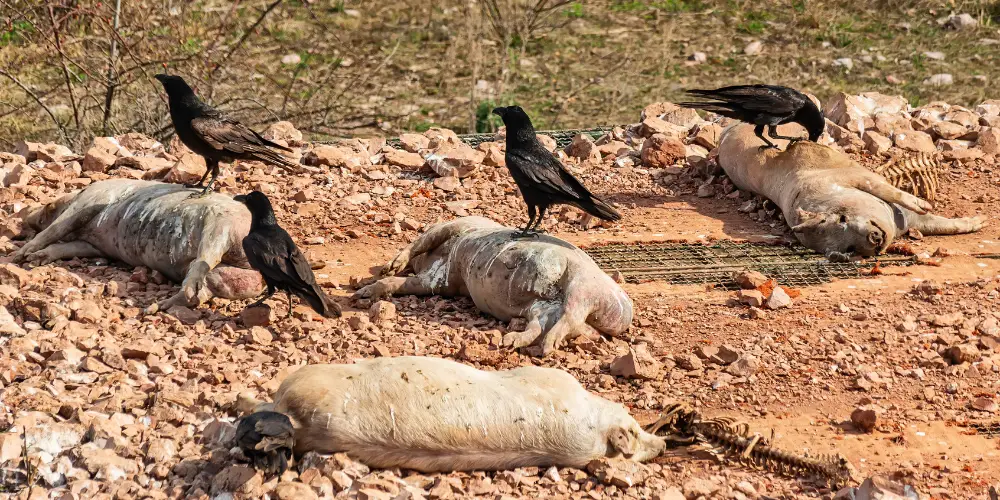Many may confuse these black, beady-eyed birds with their close cousins, the crow. But while we all know what you call a group of crows, what do you call a group of ravens?
A group of ravens is called an unkindness. The origins of this name are dubious, but many attribute it to the raven’s association with witches and witchcraft. Others have attributed it to their unkind habits of stealing eggs from other birds.
To get to the bottom of the origins of this name, let’s take a closer look at its history and the raven itself.
Please keep reading to learn all you need to know about what to call a group of ravens and why we call it that.
What is the Name’s Origin?

Ravens have some unique characteristics that make them different. For example, their wingspan is larger than a crow’s, and their heads and beaks are larger. They also have a unique tail shape different from a crow’s.
So, where did the name “unkindness” for a group of ravens come from? As we said earlier, some have speculated it came from the bird’s association with witchcraft.
When people gave the stock to witchcraft and the dangers of witches, ravens were seen with suspicion and were generally regarded as unkind or evil creatures.
The other association is with the raven’s habit of stealing eggs from other birds’ nests and then eating them. While not inherently evil or “unkind,” it seems a bit underhanded to use another animal’s eggs as a food source.
Whichever way you decide to look at it, calling a group of ravens an unkindness most likely originated from the opposing view most people have of the bird. In folktales, public opinion, and even biology, the raven seems to carry with it the reputation of being sneaky and underhanded, even unkind.
Looking at them this way makes sense that we would refer to a group of ravens as an unkindness.
Alternative Names
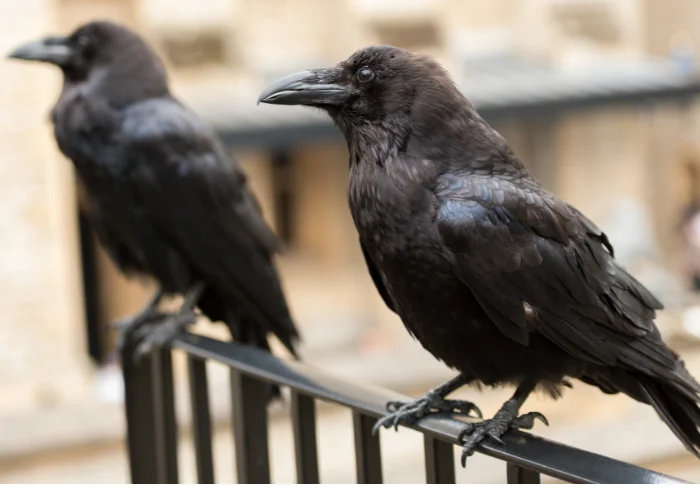
While the most commonly used name for a group of ravens is “unkindness,” several other terms are also used to refer to them.
Some may call groups of ravens a “treachery” or a “conspiracy” rather than an unkindness.
These names both have similar meanings, though they are not synonyms. The word treachery connotes having betrayed someone or something, while conspiracy connotes a plan hatched in secret. Both words have negative associations, often with criminals or other unsavory types.
This plays along with the more commonly used name of “unkindness,” further showing that our general perception of ravens is quite negative.
Much of this negativity stems from earlier peoples’ superstition and fear of the birds, but this negativity persists even today.
Why Do Ravens Form Groups?

Ravens are typically less likely to fly in groups than solo, only forming an unkindness in certain circumstances. They are much less likely to form groups than their close cousin, the crow.
The main reason ravens will come together in an unkindness is for mating season.
During these times, ravens flock around one another to find a mate. Males will be particularly vocal, giving loud, throaty calls easily distinguishable from a crow’s call. Once the ravens have mated, the unkindness will typically disperse.
Another reason you may see a group of ravens congregating is to feed on roadkill or other dead animals. These groups will only stick together for a short time, as after the carcass has been picked clean, they will part ways in search of food elsewhere.
Ravens, Intelligent Bullies
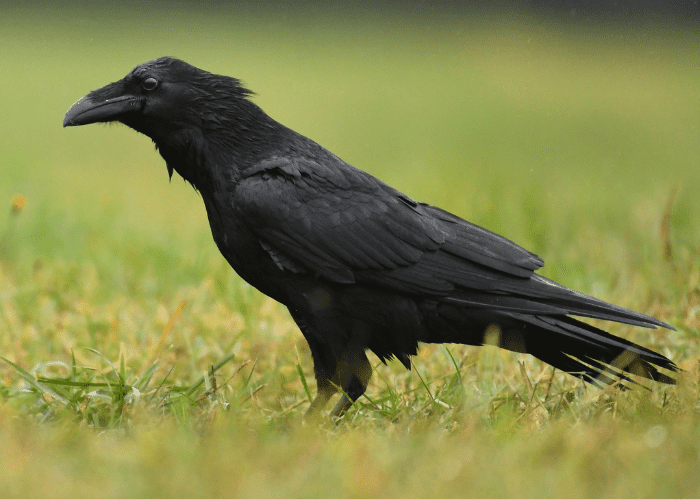
Ravens are among the most socially intelligent animals we know of and have studied in the wild, exhibiting complex and nuanced social hierarchies within family groups and flocks.
Not only are they capable of figuring out the social dynamics of their group, but they can also discern hierarchy in groups they’ve never been a part of. The only other beings we know of who can do that are humans.
This social awareness allows them to be unkind toward one another, another interesting reason for calling them an unkindness in groups. Their social hierarchies usually require that males are always higher up in the social order than females, which is unkind in and of itself.
Additionally, fights between ravens are fairly common, generally occurring between members of the same sex. Such fights often determine social standing within a raven’s family group.
As you can see from all of this, ravens use their social intelligence to bully each other and maintain a strict social ladder that does not necessarily benefit every bird part of it.
Final Thoughts
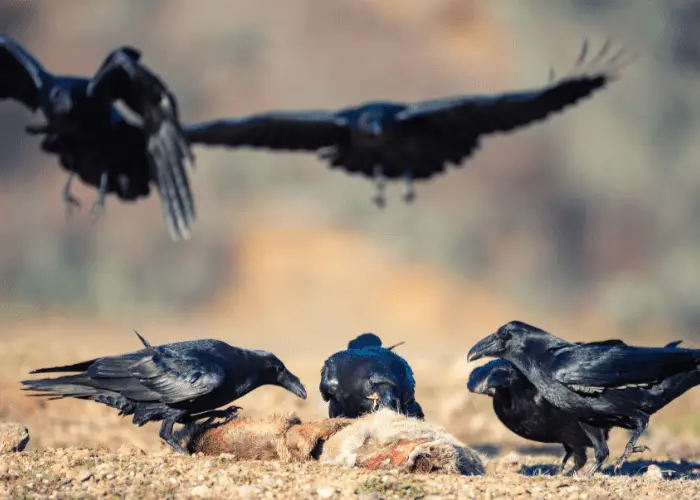
Though commonly mistaken for their close cousin, the crow, Ravens are large birds with distinctive features that set them apart from other carrion birds. The most commonly used name for a group of ravens is unkindness, but they can also be called a conspiracy or treachery.
The origins of these names come from people’s negative perceptions of the raven, often associating them with darkness and death, trickery, witchcraft, and bad omen.
They have also proven to behave “unkindly” in their social circles, routinely bullying others to improve their social standing. So taking all of this into consideration, “unkindness” is a fitting name for a group of these birds.
We hope the information we’ve provided you in this article has answered all your questions about calling a group of ravens.
For more animal information, check out some other articles on our blog.

